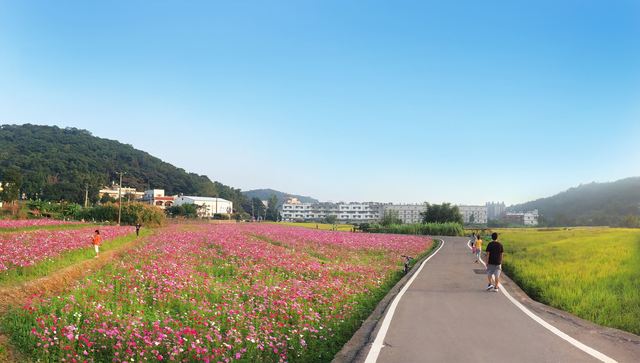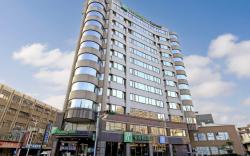Maple Tree Pit Introduction
Fields, old trees, and country lanes—surprisingly, Taoyuan also has a "Brolin Avenue"? If you want to wander through a perfect sea of flowers, you don't have to limit yourself to Daxi! In the area, there are three valleys known as Feng Shu Keng (also called Feng Shu Village), named for the maple trees that were once planted here. Although you no longer see the sight of dense maple forests, you can enjoy the swaying green rice waves, the vast white miscanthus in the mountains, the fluttering of Paulownia flowers in May, and the vibrant sunflowers in the summer during different seasons. Leisurely walking or biking around is a great pleasure. From Guangming Street, turn left into Lane 290 and continue straight for about 160 meters to the flower viewing route—the intersection of Zhong Keng Line and Feng Wei Keng Line. Zhong Keng Line extends all the way to the Land God Temple before Bridge No. 5, covering about 4 kilometers with a slightly steeper gradient than Feng Wei Keng Line. Along the way, apart from some small factories, there are fields of crops, creating a rural tranquility in the sparsely populated Feng Shu Keng. The gentle breeze converses with the ripening crops, the air is filled with the fragrance of dragon fruit, elegant egrets soar, and the chirping of insects and birds creates an unmelodious countryside ballad. After the November harvest, farmers scatter cosmos, sunflowers, and zinnias, transforming the farmland into a flower field, with dazzling colors that make it hard to resist stopping. On the other branch of the fork—the Feng Wei Keng Line, stretching about 5 kilometers, features a winding path with an ancient sweet gum tree over 200 years old, making it the most iconic landmark of Feng Shu Keng. Many people come to this "Northern Brolin Avenue" to pay homage, relaxing under the old tree with tea while enjoying the blue sky and green sea; doing nothing is the only necessary thing at this time. The agricultural area along Feng Wei Keng Line is even larger than that of Zhong Keng Line, and terraced fields often rise higher than the roads due to the terrain. In the agricultural off-season, you can also see seas of cosmos and zinnias blooming. Looking out over the valley, with Paulownia flowers in summer and white miscanthus in autumn, it creates a colorful landscape.







































